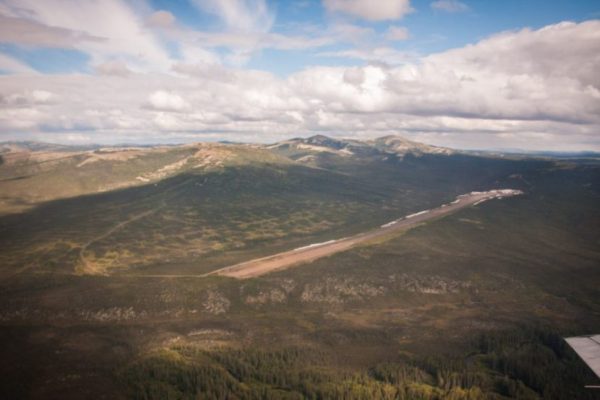
A tailings dam collapsed last month in Brazil, killing more than 150 people. That accident raised fears among some residents in the Yukon-Kuskokwim Delta about the safety of the tailings facility and dam that Donlin Gold plans to construct for its large gold mine. Donlin says its design is much safer than the one that collapsed in Brazil.
The dam collapse in Brazil is a nightmare for the communities nearby. Even after the dam is fixed, residents will have to deal with decades of contamination. Articles about that accident made the rounds on Facebook in the Yukon-Kuskokwim Delta.
“I watch the film, I watched the flooding; I watched the number of deaths and destructions and it just sent fear into me because what if that happened, and it could so easily happen [here],” said Beverly Hoffman, a Bethel resident who has opposed the Donlin mine for years. In her eyes, this latest disaster is just another example of why the mine shouldn’t be built.
Donlin wants to build one of the world’s biggest gold mines in one of the most remote parts of Alaska. The mine site is 10 miles from Crooked Creek, a village with a population of roughly 100. The mine site sits on a tributary of the Kuskokwim River, and part of that mine would include a tailings dam that would hold the chemical-laced waste forever. The river is the biggest food source for the Y-K Delta, where most people rely on subsistence. Donlin Gold spokesman Kurt Parkan says that the tailings dam the company has planned is safe.
“We want it to be safe. We want to protect the environment. We want it to be absolutely the safest that we can do,” Parkan said.
How mines store waste is always a controversial subject, because that waste never disintegrates and the chemicals carry serious health consequences if released into the water or ground. But there are a few major differences between the dam in Brazil and Donlin’s proposal. One is the actual design.
The Brazil dam used a design called an “upstream” tailings dam. That type is the cheapest, and incorporates the tailings into the design. Donlin is using what’s called the “downstream” method. It’s more expensive, and is considered the safer design among mining experts. The dam is built with rock, instead of using tailings as part of the materials to build the dam. Parkan says that Donlin’s design goes another step further
“Considering the geography, and the location, and the type of the project, we have included the synthetic liner that’s not required. We’ve also included what we call “dry closure,” which is the draining of the water so that the remaining is dry and covered by rocks and soil,” Parkan said.
The proposed Donlin tailings dam will hold 412 million cubic meters of tailings, 32 times the amount of the Brazil mine, but the Donlin tailings will look like wet clay, and will never be completely dry. A Montana-based nonprofit has publicly criticized Donlin’s design in public comment. They think that Donlin should use different methods that will dry out the tailings completely and then stack them within the dam, but those methods are even more expensive than Donlin’s current design.
Donlin already has to invest a lot of money into building the gold mine: more than $6 billion. Parkan says that he “can’t answer” whether the more expensive methods preferred by the nonprofit were too costly.
“There’s so many factors that go into operating the mine,” Parkan said.
The Army Corps of Engineers already signed off on Donlin’s design after its lengthy environmental review that finished last year. Donlin still has to go through its dam safety certification with Alaska regulators, which will take two years. The state is not required to include the public in the process.




